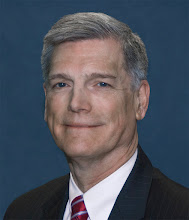 With the release of the "Pickens Plan" in 2008, natural gas gained added currency as a "bridge" fuel that could reduce our dependence on oil for transportation and displace coal for baseload electrical generation. The appeal was fueled by a rapid rise in the amount of natural gas coming from new domestic sources, primarily gas-bearing shales.
With the release of the "Pickens Plan" in 2008, natural gas gained added currency as a "bridge" fuel that could reduce our dependence on oil for transportation and displace coal for baseload electrical generation. The appeal was fueled by a rapid rise in the amount of natural gas coming from new domestic sources, primarily gas-bearing shales.While proponents have talked confidently about the potential for abundant natural gas from shales, others have expressed concern about reports of environmental damage from the chemicals used in extracting gas from shale. Home Box Office (HBO) weighed in this summer with a film full of scare stories about those chemicals. According to HBO, the film, Gasland, features "...interviews with ordinary citizens whose lives have been irreparably altered by hydraulic fracturing." The HBO web site adds, "Part verite road trip, part expose, part mystery, and part showdown, Gasland follows director Josh Fox on a 24-state investigation of the environmental effects of hydraulic fracturing."
With its parade of pitiful victims with wrenching tales of personal health tragedies, Gasland is emotionally gripping. We are in no position to judge the balance or accuracy in its rendering of the facts, but note that the artful style of the film has much in common with documentaries and films produced by spirited opponents of the nuclear power industry. Gasland has prompted numerous responses from proponents of shale gas, including for example, the Natural Gas Supply Association and the American Clean Skies Foundation. (Both sites also provide information explaining the extraction process).
Hydraulic fracturing entails injecting water under extremely high pressure to open fissures in gas-bearing rock formations deep underground. Chemical and physical additives mixed with the drilling ("fracking") fluid enhance the release of the embedded natural gas and facilitate its movement to the return pipe to the surface. Drillers consider the precise mix of additives they use to be proprietary. In most states, drillers have not been required to disclose the contents of their proprietary drilling fluids. In the Energy Policy Act of 2005, fraccing mixtures were exempted from federal coverage by the Clean Water Act. However, this July, the Senate's draft "Clean Energy Jobs and Oil Company Accountability Act of 2010" included a provision (Title XLIII) that would require disclosure of fracking mixtures by 2012, unless required sooner by a state. Additional scrutiny of hydraulic fracturing is coming from the U.S. Environmental Protection Agency (EPA), which is researching the impacts of hydraulic fracturing and has been soliciting public input on the subject.
Whatever one thinks of the risks and benefits of gas from shale, this summer's publicity on hydraulic fracturing illustrates that political risk must be considered alongside other risks associated with each energy policy option. For this and many other reasons, we strongly support a diverse energy supply and an "all-of-the-above" national energy policy.

Comments